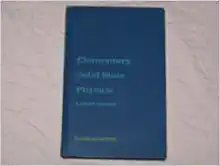Question
How far does the runner whose velocity-time graph is shown below travel in12s? m https://www.webassign.net/waplots/c/2/62c34f817e12ae518fa2f515f95e1b.gif The graph is of v x versus t for an
How far does the runner whose velocity-time graph is shown below travel in12s? m https://www.webassign.net/waplots/c/2/62c34f817e12ae518fa2f515f95e1b.gif
The graph is of vx versus t for an object moving along the x-axis. What is the average acceleration between t = 9.0 s and t = 13.0 s? Solve using two methods: a graphical analysis and an algebraic solution. m/s2 in the +x-direction
https://www.webassign.net/grrphys2/2-p-041.gif
A snowmobile moves according to the velocity-time graph shown in the drawing. What is the snowmobile's average acceleration during each of the segments A, B, and C? The scale for the time axis is 80 s per increment, and the scale for the velocity axis is 360 m/s per increment.
https://www.webassign.net/cj8/2-p-065-alt.gif segment A? m/s2 segment B ? m/s2 segment C ? m/s2
A bus makes a trip according to the position-time graph shown in the drawing. What is the average velocity (magnitude and direction) of the bus during each of the segments A, B, and C? Express your answers in km/h. The scale for the time axis is 1.5 h per increment, and scale for the velocity axis is 50 km per increment. (Indicate direction by the sign of the velocity.) https://www.webassign.net/cj8/2-p-068-alt.gif
segment A km/h segment B km/h segment C km/h
Step by Step Solution
There are 3 Steps involved in it
Step: 1

Get Instant Access to Expert-Tailored Solutions
See step-by-step solutions with expert insights and AI powered tools for academic success
Step: 2

Step: 3

Ace Your Homework with AI
Get the answers you need in no time with our AI-driven, step-by-step assistance
Get Started


